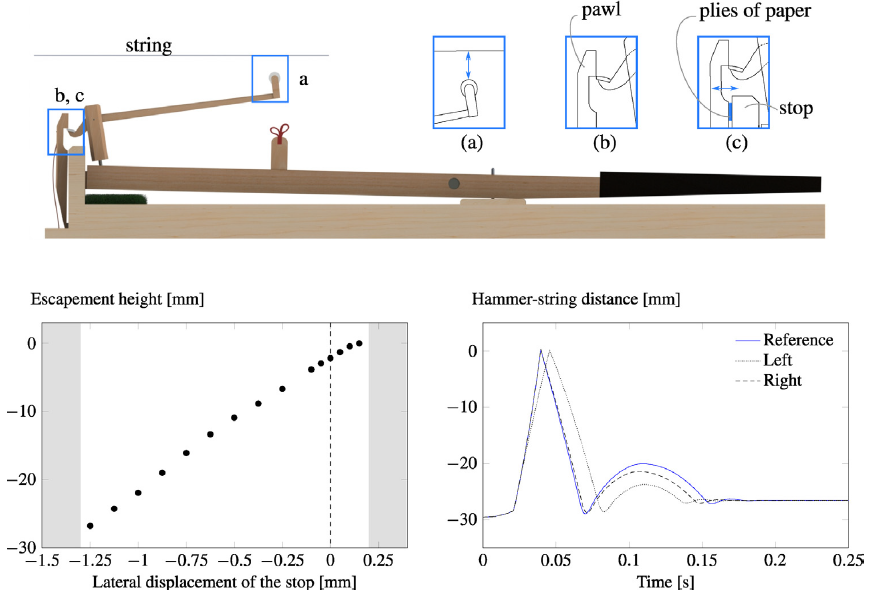Piano action
Introduction
Piano are complex instruments that are composed of several parts. One of the most important components is the piano striking mechanism, called piano action.
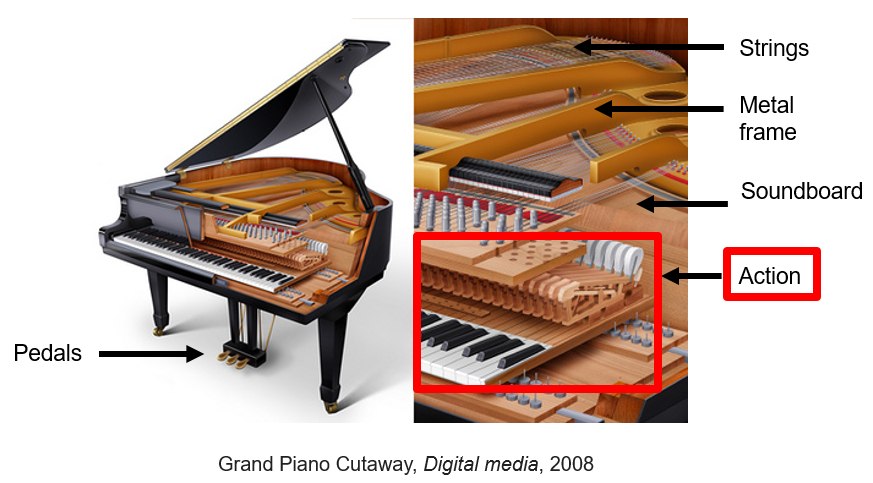
Thanks to our multibody modeling and analysis capabilities, we have carried out several virtual demonstrators of piano actions in order to understand, explain and demystify the functioning of the “from key-to-string” transmission.
These projects have been achieved in close collaboration with the MIM, the Musical Instruments Museum of Brussels.
History:
The pianoforte is born in the 18th century thanks to B. Cristofori, that roughly speaking combined the harpsichords and the clavichords and inventing the escapement principle.
S. Erard invented later on the double escapement mechanism that is used in every grand piano in the world today.
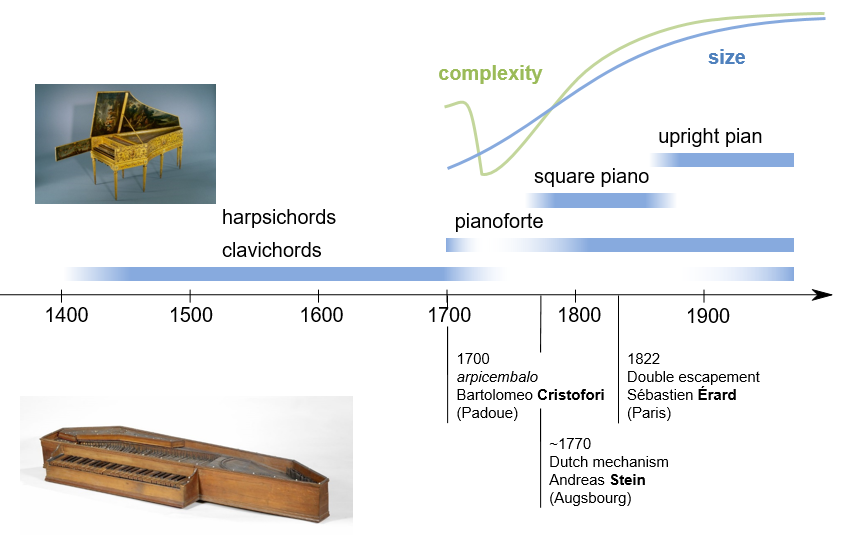
Multibody model of a Grand Piano Action
In particular, the single and double escapement principle can be explained using the multibody approach and a real demonstrator.
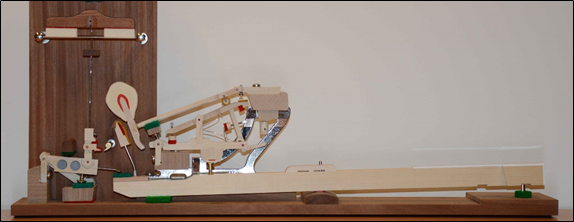
An experimental validation via high speed camera (see below) allows us to compare the multibody model with a real demonstrator, with an input of a 1-kg mass dropped on the key.
Several publications of our lab give more details about this model (Bokiau 2017, Fisette 2019, …).
Upright Piano Action
Compared to the double escapement mechanism, the upright piano action is quite different. Its morphology induces a different dynamic response. For example, the repetition capabilities are less in the vertical action than for the grand piano one. A master thesis gave more insights about this action and videos below show you the experimental validations.
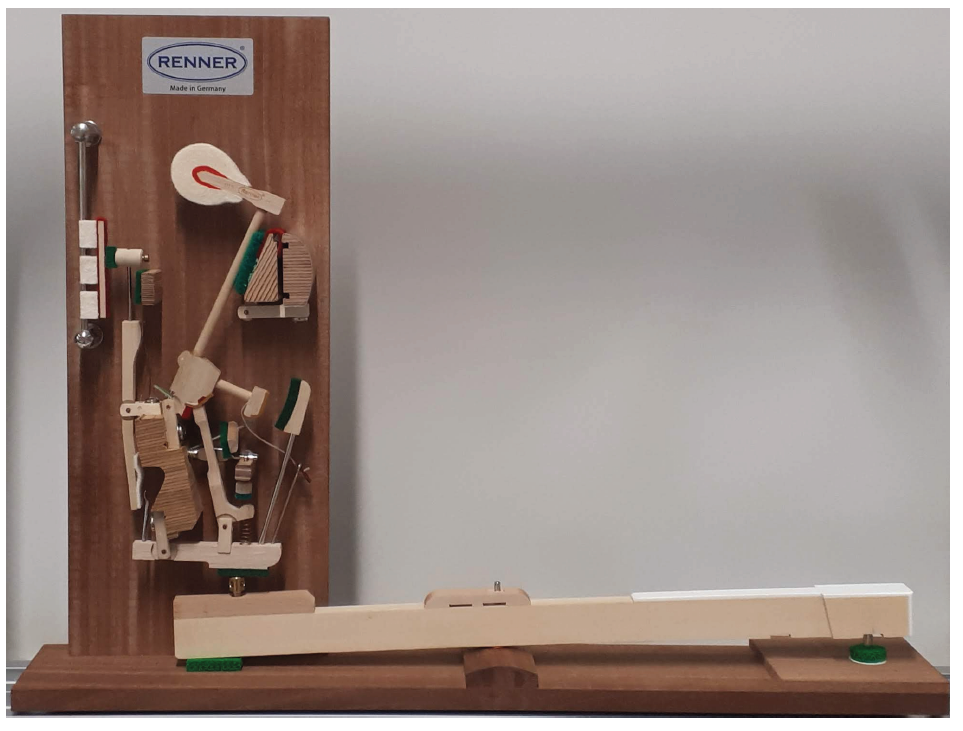
Stein Piano Action
Older mechanisms can also be reproduced virtually and in real life. The Stein mechanism was used by W.A.Mozart for some of his composition in the 18th century. A typical Stein action is made of three main bodies: (1) the key, (2) the hammer and (3) the pawl.

This action can also be analyzed and explained thanks to simulations. The following video shows the Stein mechanism functioning correctly. More videos are available on our Youtube channel.
